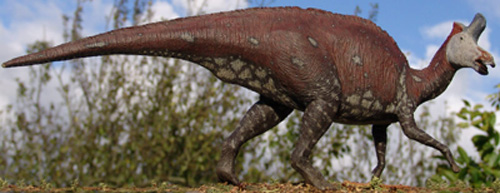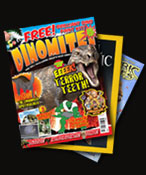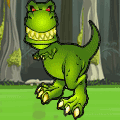MORE FACTS ABOUT LEAST KNOWN DINO
Introduction
Knowing about the unknown things is the best fun part of life.One such info is Dinosaurs.They come into view as large range of adaptations to a wide range of environment, and as a aconsequence of that,they became the most successful land animals of all time.They dominated the terrestrial ecosystem for over 100-million years.
Dinosaurs are found during the early interval of time known as the Mesozoic Era, which began 250 million years ago and ended 65 million years ago. The Mesozoic is further subdivided into three periods, the Triassic, Jurassic, and Cretaceous. Fossils,the dead remains of the past show that the dinosaurs originated during the mid to Late Triassic, perhaps 230-235 million years ago, and they remained the dominant land animals for another 160 million years, until they died out at the end of the Cretaceous.
The research for dinosaurs has been carried to every continent on Earth. This includes Antarctica, where the first dinosaur is said tpo be found.Every dino has its name according to the fossils found, also most of them are named by paleontologist who found them. Hundereds of fossils were found for different breed of dino.
This page deals with some dinosaurs along with its facts.
 AACHENOSAURUS
AACHENOSAURUS
Pronunciation
ah-shen-o-SOR-us
Author
Gerard Smets (1888)
Synonyms
Aachenoxylon (Hovelacque, 1890)
First Discovery
Moresnet, Belgium
Aachenosaurus multidens
Aachenosaurus, this name arrived from the strength of two fossilized fragments that were thought to be parts of a duck-billed hadrosaur, which was imagined to be five meters long, bipedal, and covered with dermal spines.
The fossils turned out to be full of frightened wood from the Aachen deposits of Moresnet, on a approx triangular tiny European mini-state on the border of Germany, Belgium, and Holland. Not all of them were seemed particularly keen to stake their claim until they discovered a zinc-rich mine at Vieille Montagne, at which point where Belgium got out of their geometry set and expanded their territory by a couple of miles.
Gerald Smets, doctor of natural sciences and professor at the University of Saint-Joseph in Hasselt, was absolutely obstinate that his discovery had been properly scrutinized with the naked eye, magnifying lens and microscope, but when his claims were rubbished by Louis Dollo and a neutral commission,he withdrew from science due to pure discomfiture and faded into the mists of time.
Etymology
"Aachenosaurus" is originally from "Aachen" (for the Aachen deposits of Moresnet where it was discovered) and the Greek "sauros" means lizard.
The species epithet, multidens, is derived from the Latin "multus" that means many and "dens" that is teeth, though not sure how many teeth a tree has!!!!
Unknown Facts about Aachenosaurus
1.Aachenosaurus,will be the first name that one will find in list of dinosarus
2.It is said that the fossils of this animal is found in Belgium and Germany.
3.There also a rumuour that Aachenosaurus is not an animal or even a living creature
BACK TO LIST
 AARDONYX
AARDONYX
Author
Dr. Matthew Bonnan(co-author on study)
First Discovery
South Africa
About It
Aardonyx is a kind of a prosauropod dinosaur. It is known from the type, Aardonyx celestae, which is found from South Africa. A. celestae was named after Celeste Yates,the one who prepared the first known fossil material of the species,this acts as the intermediate between prosauropods and sauropods.
According to Dr. Matthew Bonnan, the co-author on his study, he said that that already knew that the sauropods and near-sauropods would be bipeds .He also specifies that it bares weight in its foot,that started very earky in dinosaurs.He also adds that it was filling to have a hypothesis on how large would be its size,its field.
Physical Description
This genus is widely compared with humans,the disarticulated bones of this animal belongs to two immature individuals.
It to be made up of diverse parts of cranial elements, vertebrae, dorsal and cervical ribs, gastralia, chevrons, elements of the pectoral and pelvic girdles and bones of the fore and hind limbs, manus, and pes.
The the physical existence of these bones in a single dense of gathering together in a localized channel can filled as a possible choice that they came from relatively complete carcasses.
Both individuals were process of thinking that they must have been less than 10 years old at the time of their death because of the lack of peripheral rest lines in the cortices of sampled bones.
"Digging Up The Past"
The discovery of Aardonyx is telecasted in the second episode of the 2010 BBC documentary named Museum of Life, "Digging up the Past".is described by paleontologist Paul Barrett as a transitional form between bipedal prosauropods and the giant quadrupedal sauropods.
BACK TO LIST
 ABROSAURUS
ABROSAURUS
Pronunciation
AB-RO-saurus
Meaning
delicate (skull)lizard
Synonyms
'Abrosaurus gigantorhinus'
First Discovery
Sichuan, China
About It
The naming of this animal as Abrosaurus has been a long and twisted process. Abrosaurus was discovered in 1984 in a thesis which is authored by Ouyang.
Abrosaurus, at first described as a camarasaurid sauropod member, as it cannot turn out to be a member of that particular family, further research has indicated that it is a basal member of Macronaria,
The generic name meaning 'delicate lizard', referring to the nature of the skull, that is of large openings separated by thin bony struts.
Unknown Facts
Abrosaurus likely shared its ecology with other sauropods like Camarasaurus,as well as other types of herbivorous dinosaur such as Agilisaurus and all other dinosaurs known from the same fossil formation as Abrosaurus.
Yangchuanosaurus is one particular large theropod dinosaur that may have been able to tackle an Abrosaurus.
The idea is hesitant, because most descriptions of Abrosaurus is mostly around its skulll and not the additional post cranial skeletal fossils that were later attributed to it.
Abrosaurus is not more than 30 feet long,that is 9 meter.
The Abrosaurus actually existed at least 10-15 million years before the truly gigantic Sauropods even evolved.
Taxonomy
The word abros is a Greek word meaning fragile or delicate,the word saurus means lizard.Thus the name has arrived for this animal.Its skull is so fragile and small,it is made up of small pieces of bones.Hence it is considered as a delicate dinosaur.This binomial name was kept to this animal in honor of a Chinese poet named Su Dongpo.
BACK TO LIST
 BALAUR
BALAUR
Author
Csiki et al. (2010)
First Discovery
Sebes, Romania
Balaur Bondoc
The first leftovers that would turn out to be Balaur bondoc,was exposed in 1997 by Dan Grigorescu,that consists jigsaw of arm bones that paleontologists had to make a great effort to put together but ultimately identified as the property of an oviraptorosaur.(mistaking it)
Balaur is been predicted as largest dinosaur in its bionetwork despite, measuring only two meters in length. It is because in over a hundred years of research, a larger theropod has never been discovered in Romania.
On latest study by Cau et al. has Balaur hooked to be closer to modern birds than other dromaeosaurids.. In fact, in a bizarre twist, it may actually be a weird, herbivorous, flightless bird, with its robust first toe being used for weight-support rather than a weapon and a swept-back pubis making room for a pot belly to digest vegetation, much like therizinosaurids.
Taxonomy
Balaur is a Romanian term which designates a mythical folk dragon-like creature. In lamens terms it means "dragon".The word bondoc is pronounced like "boned oak" which literally means "squat and chubby" or possibly "runt" in Romanian. The authors specify "stocky" in reference to the small but robust build of the animal, which sounds much better.
Physical Description
This animal lived in mesozic Era,with maximum length of 2.1 meters and of maximum hip length of 0.7 meters long,it weighs around 45kg on average.It is a carnivore animal.Its age estimated to be around 71-66 mya.
BACK TO LIST
 CAENAGNATHASIA
CAENAGNATHASIA
Pronunciation
see-NAG-nuh-THAY-zhee-a
Meaning
Asian caenagnathid
Author
Currie, Godfrey and Nesov (1993)
First Discovery
Dzharakuduk, Uzbekistan
About It
The first remnants of Caenagnathasia species were exposed at Dzharakuduk II, Uzbekistan. The holotype (the individual organism used in naming) is a pair of fused dentaries of the lower jaws. A second specimen was referred to the species based on a right dentary from a slightly smaller individual.
Another partial right dentary as found at the same region in 2015, along with oviraptorosaur neck and back vertebrae and a partial thighbone, which were also assigned to Caenagnathasia simply because it's the only oviraptorosaur known from the Bissekty Formation.
Taxonomy
Caenagnathasia is obtained from "Caenagnathidae",the family it belongs to and "Asia" The species epithet, martinsoni, honours Gerbert Genrikhovich Martinson.
Physical Description
This specie lived in mesozic Era,with maximum length of 0.6 meters
and of maximum hip length remains unknown ,it weighs around 1.5 kg on average (is the data according to estimation).It is a carnivore animal.Its age estimated to be around 94-86mya.
BACK TO LIST
 DACENTRURUS
DACENTRURUS
Pronunciation
da-sen-TROOR-us
First Discovery
Wiltshire, England
About It
The first leftovers of Dacentrurus species were found at the Swindon Brick and Tile Company Quarry in the Kimmeridge Clay Formation of Wiltshire, England.
Taxonomy
Dacentrurus is obtained from the Greek da that means "very" and kentron that means "sharp point" and oura that means "tail", in reference to the "thagomizer" on its tail.
Physical Description
This specie lived in mesozic Era,with maximum length of 8 meters
and of maximum hip length of 2 meters ,it weighs around 2 tons on average (is the data according to estimation).It is a Herbivore animal.Its age estimated to be around 161-145 mya.
BACK TO LIST
 EDMONTONIA
EDMONTONIA
Pronunciation
ed-mon-TOE-nee-uh
First Discovery
Alberta, Canada
About It
The remnant of Edmontonia longiceps were exposed in the Horseshoe Canyon Formation (formerly the Edmonton Formation) in the Edmonton Group of Alberta, Canada, by George Paterson in 1924.
Edmontonia was broaden equipped with three halfrings made of large keeled plates to protect the back of its neck and shoulders, the latter of which sported the longest spikes
Taxonomy
Edmontonia was named after the "Edmonton" configuration.
The species labeled , longiceps, is obtained from the Latin longus, that means "long" and ceps means head,it ia named like this of its long head
Physical Description
This specie lived in mesozic Era,with maximum length of 7 meters
and of maximum hip length of 2 meters ,it weighs around 3 tons on average (is the data according to estimation).It is a Herbivore animal.Its age estimated to be around 73-70 mya.
BACK TO LIST
 FUTALOGNKOSAURUS
FUTALOGNKOSAURUS
Pronunciation
FOO-ta-long-koh-SOR-us
Meaning
Giant chief lizard
Author
Calvo et al. (2007)
Synonyms
Calvo et al. (2007)
First Discovery
Neuquén, Argentina
About It
The fossils of Futalognkosaurus were discovered in Group, 90 km northwest about Neuquen City, in Argentina's Neuquen Province. With so many Neuquens, a name like Neuquensaurus may seem like a more obvious choice. Unfortunately, J.E. Powell beat the authors to the punch when he assigned this name to a saltasaurid titanosaur in 1992.
Taxonomy
Futalognkosaurus, named by Calvo, Porfiri, in 2007, a full seven years after its discovery, is derived from the Mapuche Futa means giant and Lognko that means (chief), and the Greek "sauros" (lizard). The species epithet, dukei, honors Duke Energy Argentina, which helped fund the skeleton's excavation.
Pysical Description
This specie lived in mesozic Era,with maximum length of 28 meters
and of maximum hip length remains unknown ,it weighs around 43 tons on average (is the data according to estimation).It is a Herbivore animal.Its age estimated to be around 94-86 mya.
BACK TO LIST
 GALLIMIMUS
GALLIMIMUS
About It
The first fossils of Gallimimus were discovered at "Tsagan Hushu" (the same zone as Tarbosaurus bataar) in the Nemegt Formation, Ömnögovi Aimag (South Gobi Province), Mongolia, by a joint Polish-Mongolian expedition led by Professor Zofia Kielan-Jaworowska in 1963. The holotype (GIN AN MNR no. 100/11) is a partial skeleton including the skull and lower jaws.
Taxonomy
Gallimimus is derived from the Latin "gallus" (chicken) and "mimos" (to mimic) apparently because of its chicken-like neck.
The species epithet, bullatus, is derived from the Latin "bulla" (hollow swelling) and "atus" (provided with). According to the authors this is specifically a reference to "wearing the bulla" - a golden capsule that all freeborn Roman boys were entitled to wear around their neck.
Physical Description
This specie lived in mesozic Era,with maximum length of 6 meters
and of maximum hip length remains unknown ,it weighs around 200kg on average (is the data according to estimation).It is a Omnivorous animal.Its age estimated to be around 71-69 mya.
BACK TO LIST
 HAESTASAURUS
HAESTASAURUS
Pronunciation
HAY-stuh-SOR-us
Author
Upchurch et al. (2015)
Synonyms
Pelorosaurus becklesii
First Discovery
Hastings, England
About It
The leftovers of Haestasaurus were exposed in the Hastings Beds Group (exact locality unknown), on the coast near Hastings, England,1852.
The now-named Haestasaurus potentially represents the earliest known European titanosaur, provides a glimpse of sauropod evolution from a period (Berriasian-Valanginian) just after an extinction event around the Jurassic-Cretaceous boundary, and includes the first dinosaurian skin impression recognised by science.
.
Taxonomy
Haestasaurus is derived from "Haesta" (the Saxon warlord whose people settled the area of Hastings—known in ancient texts as Hæstingas ["the settlement of Hæsta]—and gave the town its name) and the Greek "sauros" (lizard). The species epithet, becklesii, honors Samuel Husband Beckles who discovered the specimen.
Physical Description
This specie lived in mesozic Era,with maximum length of 6 meters
and of maximum hip length remains unknown ,it weighs around 200kg on average (is the data according to estimation).It is a herbivorous animal.Its age estimated to be around 145-136 mya
BACK TO LIST
DINOSAURS LIST
Here is the comprehensive list of all dinosaurs genera that ever lived in this world. Have a brief look to the entire dinosaur family.
DINOSAURS QUIZ
Here is the comprehensive list of all dinosaurs genera that ever lived in this world. Have a brief look to the entire dinosaur family.
DISPLAY MUSEUMS
Here is the comprehensive list of all dinosaurs genera that ever lived in this world. Have a brief look to the entire dinosaur family.
Dinosaurs Information
dinosaur fossils
Dinosaur fossils have been known about for millennia, though their true nature was not recognized; the Chinese considered them to be dragon bones, ..
Origin of Dinosaurs
To understand the origins of the dinosaurs, it is necessary to understand some of the basic principles of evolution.Geologists have divided Earth's history
Theories of Extinction
Other scientists think the extensive volcanic activity in Indian known as the Deccan Traps may have been responsible for, or contributed to, the extinction.....
Anatomy of Dinosaurs
How do scientists know what the dinosaurs looked like? No-one can say for sure, but there are some lines of evidence in the fossil record, and from studies of modern animals.
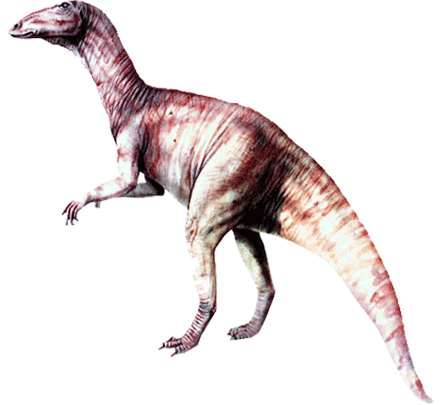
 AACHENOSAURUS
AACHENOSAURUS AACHENOSAURUS
AACHENOSAURUS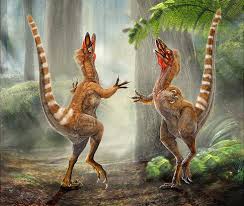
 AARDONYX
AARDONYX AARDONYX
AARDONYX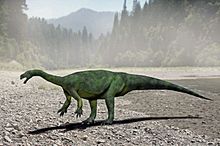

 ABROSAURUS
ABROSAURUS ABROSAURUS
ABROSAURUS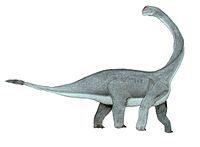
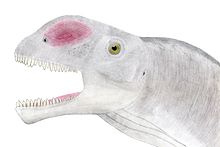
 BALAUR
BALAUR BALAUR
BALAUR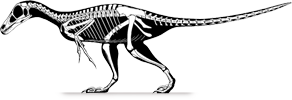
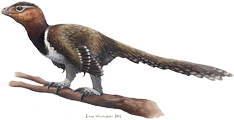
 CAENAGNATHASIA
CAENAGNATHASIA CAENAGNATHASIA
CAENAGNATHASIA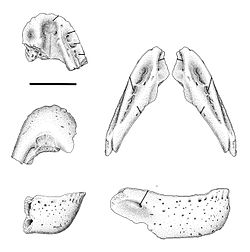
 DACENTRURUS
DACENTRURUS DACENTRURUS
DACENTRURUS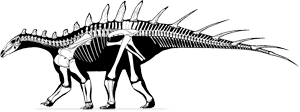
 EDMONTONIA
EDMONTONIA EDMONTONIA
EDMONTONIA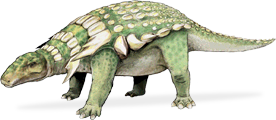
 FUTALOGNKOSAURUS
FUTALOGNKOSAURUS FUTALOGNKOSAURUS
FUTALOGNKOSAURUS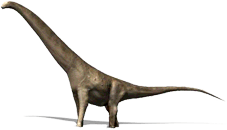
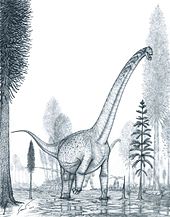
 GALLIMIMUS
GALLIMIMUS GALLIMIMUS
GALLIMIMUS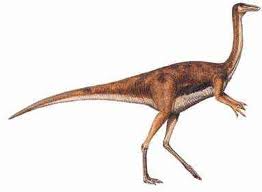
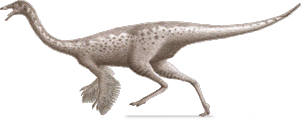
 HAESTASAURUS
HAESTASAURUS HAESTASAURUS
HAESTASAURUS








